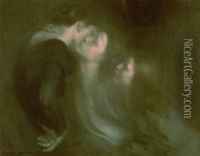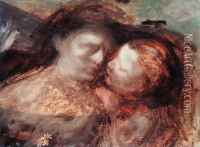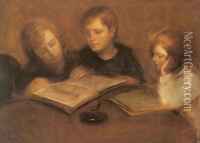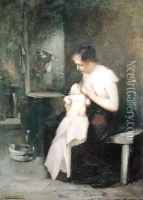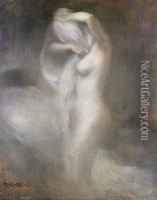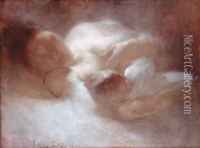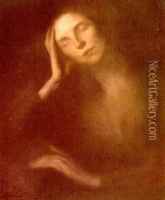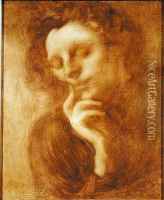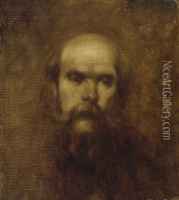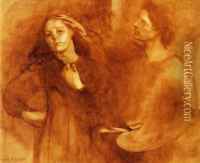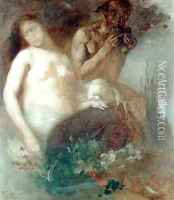Eugene Carriere Paintings
Eugène Carrière was a French Symbolist artist, renowned for his muted color palette and the intimate, often introspective subject matter of his paintings. Born on January 16, 1849, in Gournay-sur-Marne, he grew up during a period of political upheaval and artistic innovation in France. Carrière moved to Paris to pursue his art education, studying at the École des Beaux-Arts under Alexandre Cabanel. He was also influenced by the works of Gustave Courbet and Édouard Manet, whose realist approach would leave a lasting imprint on his style.
Carrière's work is characterized by a distinct use of monochromatic tones, particularly shades of brown and gray, which has sometimes been likened to a 'color of the soul.' This tonal subtlety allowed him to focus on the emotional and spiritual resonance of his subjects, rather than their physical realism. He often depicted domestic scenes, portraits of his family, and images reflecting themes of motherhood and childhood, all imbued with a sense of quiet contemplation.
His career began to flourish in the 1880s, and he became a central figure in the Parisian art world. Carrière was closely associated with the Symbolist movement, though his work also maintained a strong personal identity. He was friends with many prominent artists and intellectuals of his time, including Rodin, Gauguin, and the poet Paul Verlaine. Carrière's influence extended beyond painting; he was also involved in the burgeoning art of lithography, contributing to the revival of this printmaking technique in the late 19th century.
In addition to his artistic pursuits, Carrière was a vocal advocate for various social causes and was involved in the founding of the Salon d'Automne in 1903, an annual art exhibition aimed at promoting innovative and avant-garde art. He used his position within the art community to champion the rights of artists and to support the efforts of those who sought to break from the conservative constraints of the official art establishment.
Eugène Carrière's work continued to gain recognition during his lifetime, and he exhibited widely, including at the influential Paris Salon. He passed away on March 27, 1906, leaving behind a legacy that would continue to influence future generations of artists. His commitment to emotional depth and the atmospheric qualities of his paintings contributed significantly to the development of Symbolism and to the broader narrative of modern art.
